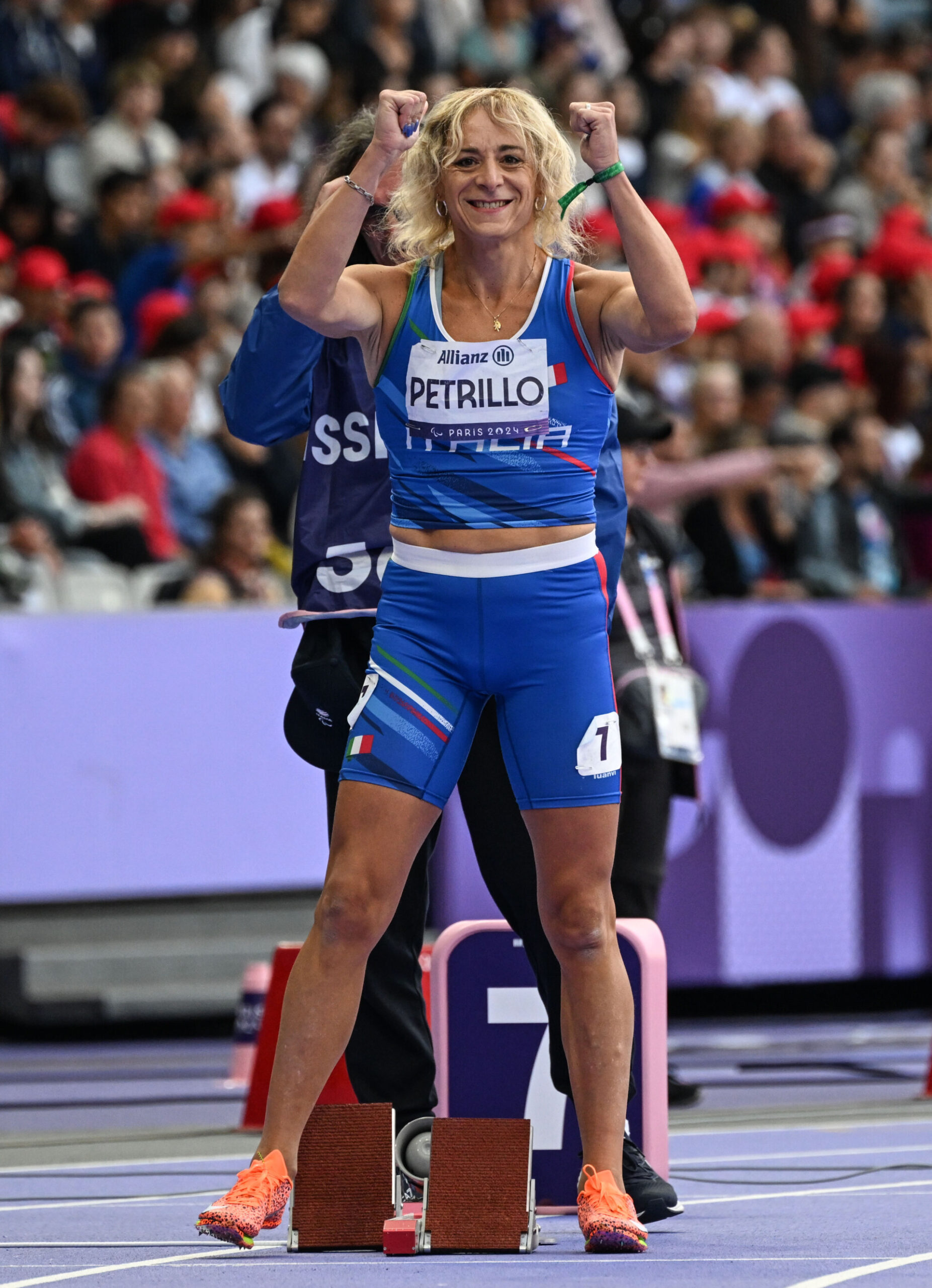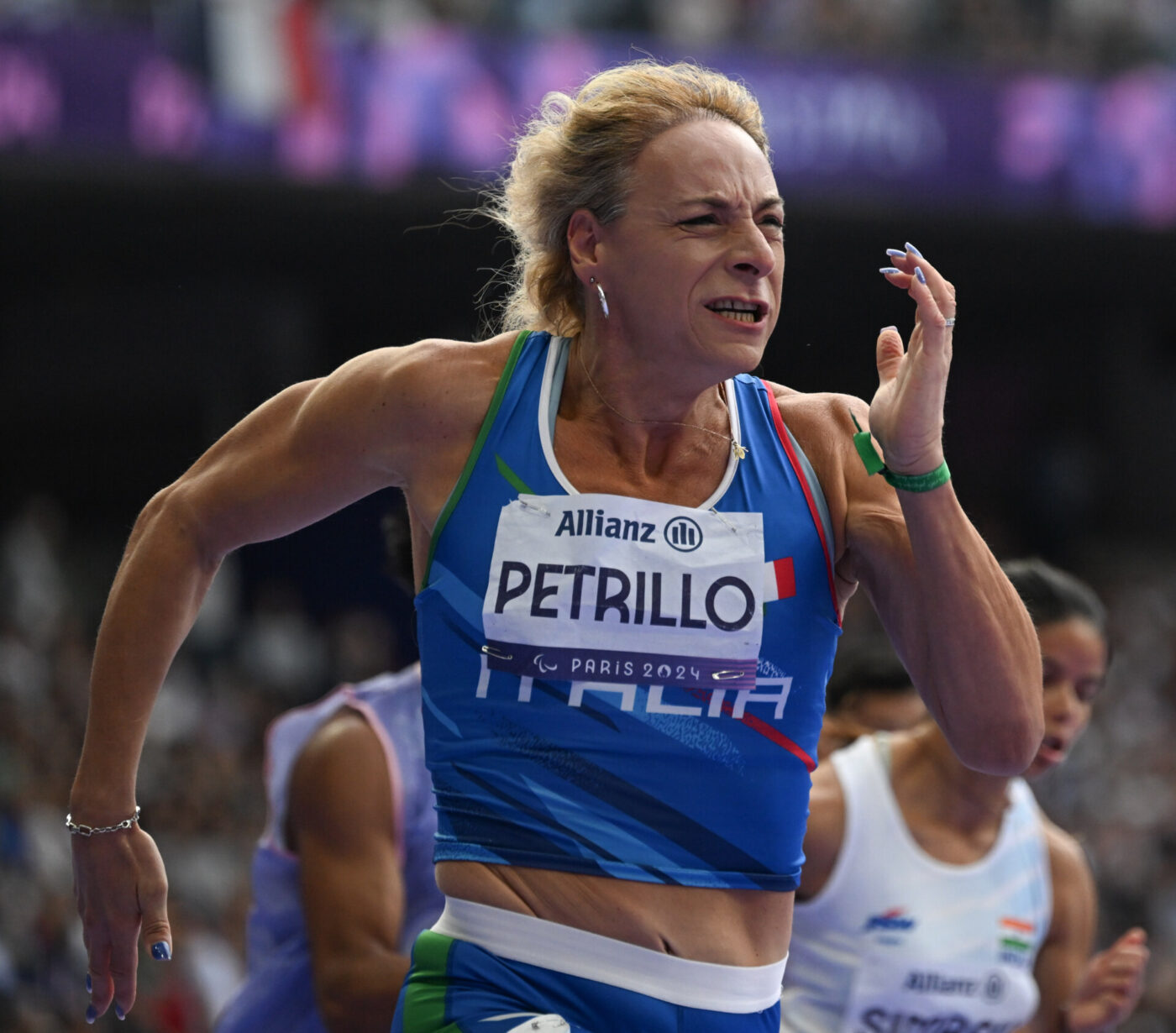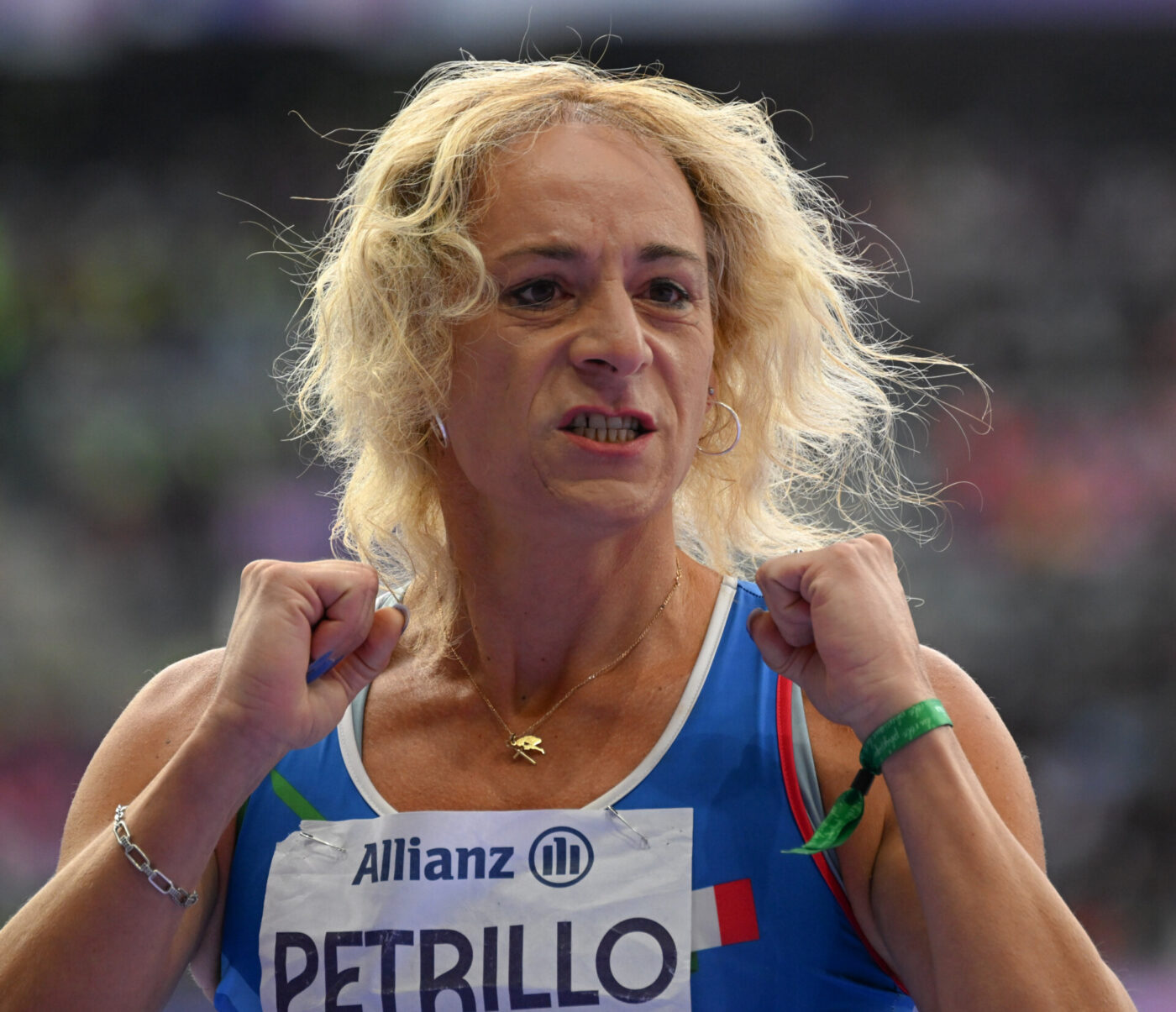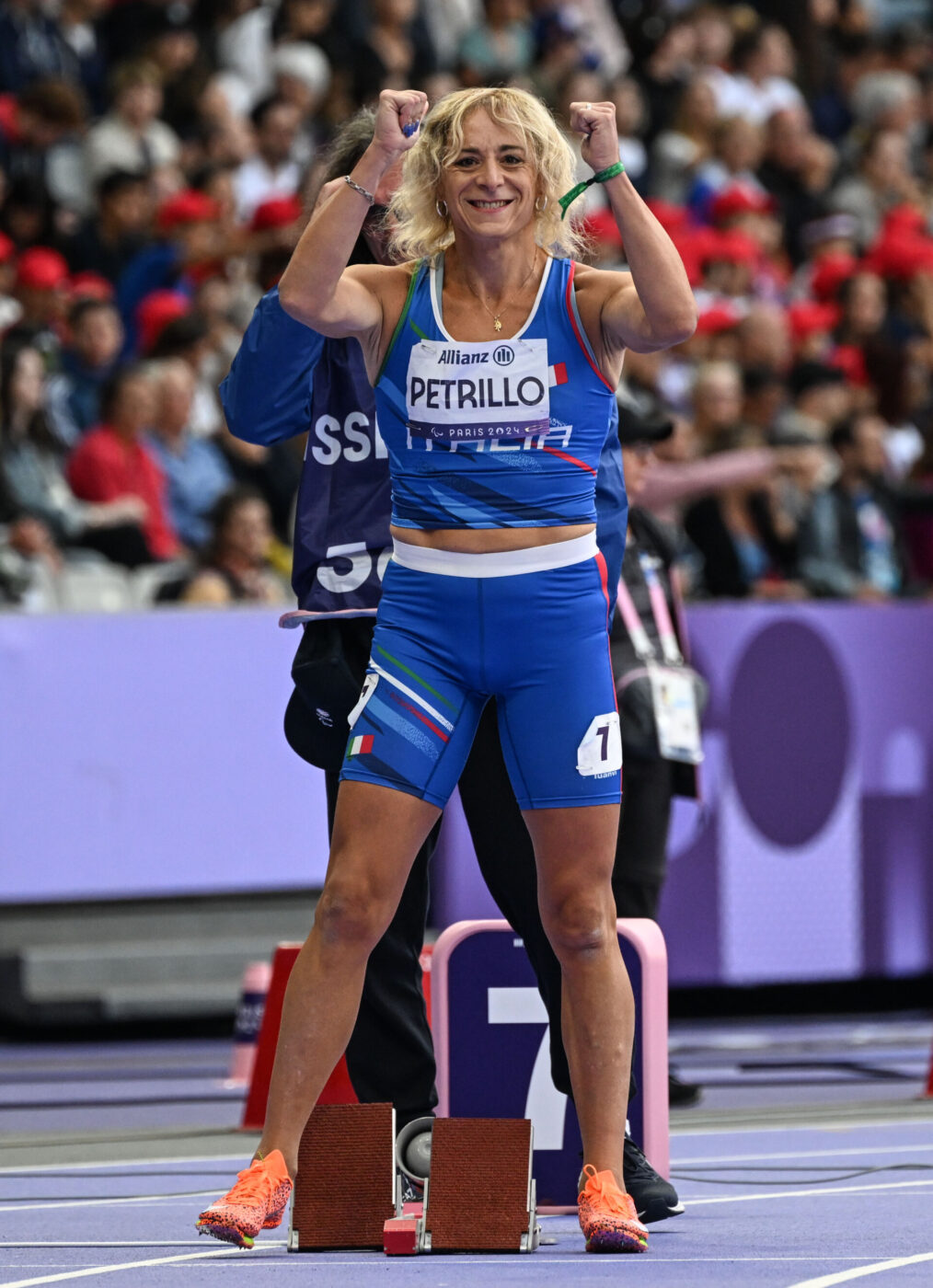“I realized it’s better to be a happy, slower woman, than a sad, faster man,” Valentina Petrillo explains. The first transgender athlete to compete at the Paralympic Games, the Naples native, however, is certainly still fast–and has broken more than just speed records.
Valentina, who is visually impaired due to Stargardt’s syndrome–a rare genetic condition diagnosed at 14 that severely affects central vision–has defied the odds to achieve her athletic dreams. Returning to running at 43 and transitioning three years later, she became a trailblazer in Paralympic sports and made history on September 11th, 2020, as the first transgender athlete to compete in the women’s category at the Italian Paralympic Athletics Championships. She continued breaking barriers, setting a national record in the T12 200 meters in March, 2021, and the T13 400 meters in April of the same year. Also in 2021, she represented Italy at the World Para Athletics European Championships, finishing 5th. At 51, she competed in the 2024 Paris Paralympics, reaching the semi-finals in the T12 women’s 400 meters and 200 meters, and achieving a personal best of 57.58 seconds in the 400 meters semi-final.
Despite her many accolades, the track (excuse the pun) has not been easy, and in March, 2023, anti-trans threats and safety concerns compelled Valentina to withdraw from the World Masters Indoor Athletic Championships. In 2024, author J.K. Rowling called the sprinter “an out and proud cheat” on X, echoing similar sentiments from former athletes and sportswriters like Mara Yamauchi, Martina Navratilova, and Oliver Brown. “I keep my distance from them,” Valentina tells me, referring to her critics.
When we talked, Valentina had just returned from her hometown, where she presented 5 Nanomoli, a documentary about her life directed by Elisa Mereghetti and Marco Mensa, as well as her autobiography Più Veloce del Tempo, which is soon to be translated into English.
Francesco Dama: How was it to return to Naples?
Valentina Petrillo: I was 46 years old when I began my gender transition. During that time, I never went back to Naples. Returning there was terrific. It felt like reclaiming my city, the place where I was born and from which I fled in search of myself. I found a city more inclusive than when I had left, very open. I didn’t expect that. Naples surprised me: the figure of the femminiello–which is essentially who I am–is deeply rooted in the city’s history. Naples is home to the largest transgender community in the Mediterranean.
FD: You’ve been living in Bologna for several years now. How did you end up there?
VP: In 1987, when I became ill, there weren’t many jobs available for someone with visual impairment. At that time, the only options I was offered were to work as a switchboard operator, a physiotherapist, or in IT. To pursue IT, I had to move to Bologna to study at the Institute for the Blind. That’s how I ended up in Bologna.
FD: Bologna has a long history of LGBTQ+ activism and is perhaps the most inclusive city in our country. What is your relationship with the city?
VP: The first Italian transgender association, the MIT (Movimento Identità Trans), was founded in Bologna. It supported and guided me through my gender transition. There’s a deep historical and cultural integration here, which is a fundamental part of the city’s identity.
FD: How did your passion for sports begin?
VP: As a child, I loved playing soccer, especially as a goalkeeper. I was quite good at it, but I had to stop because I started letting in too many goals—I could no longer see the ball. During my recent visit to Naples, I reconnected with my elementary school friends, who reminded me that as a child, I was famous in my neighborhood for being a fast runner.
FD: And how about track and field?
VP: I fell in love with track and field when I was seven, watching Pietro Mennea win the 200-meter at the 1980 Moscow Olympics. My dream started there: to wear the same blue jersey, to run. Of course, I later realized I didn’t want to do it as a man. I wanted to do it as a woman.
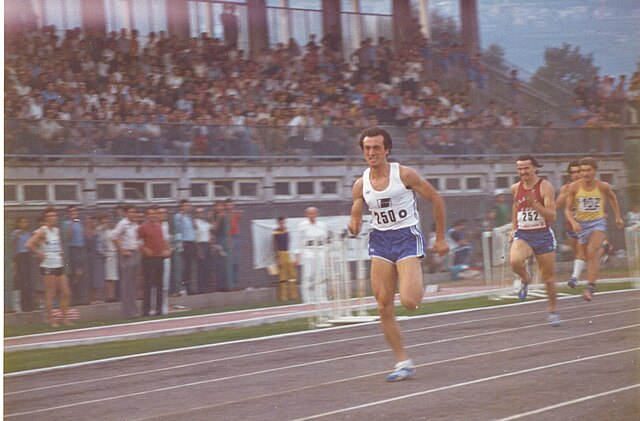
Pietro Mennea
FD: How did you realize you were ill?
VP: I was at a summer camp organized by the local parish. I noticed I struggled to read the lyrics in the hymnbook. At the time, I thought I just needed glasses, but when I got home, we realized the situation was more serious. I was 14 years old.
FD: Stargardt’s syndrome turned your life upside down…
VP: It took me years to come to terms with it. It shattered my dreams—I couldn’t get my driver’s license, which was the first thing I would’ve wanted to do once when I turned 18. My sports performance also suffered. At the time, I didn’t know there was a way to play sports as a visually impaired person. I didn’t know the Paralympic world even existed; I discovered it later, after I moved to Bologna. In 2016, when I was 43, I returned to track and field and started to achieve good results [winning 11 national titles in men’s track and field].
FD: What strategies do you employ to compete with Stargardt’s?
VP: I more or less memorize the track, though that’s not enough, but I make do. I’ve developed my own methods and automatic mechanisms. I carefully study how the starting block works and its position, and I rely on instinct. I try not to overthink it. The track colors help me. I prefer the contrast between blue and white over bordeaux and white. The purple track in Paris was very visible. I don’t know yet what the track in Los Angeles will be like…
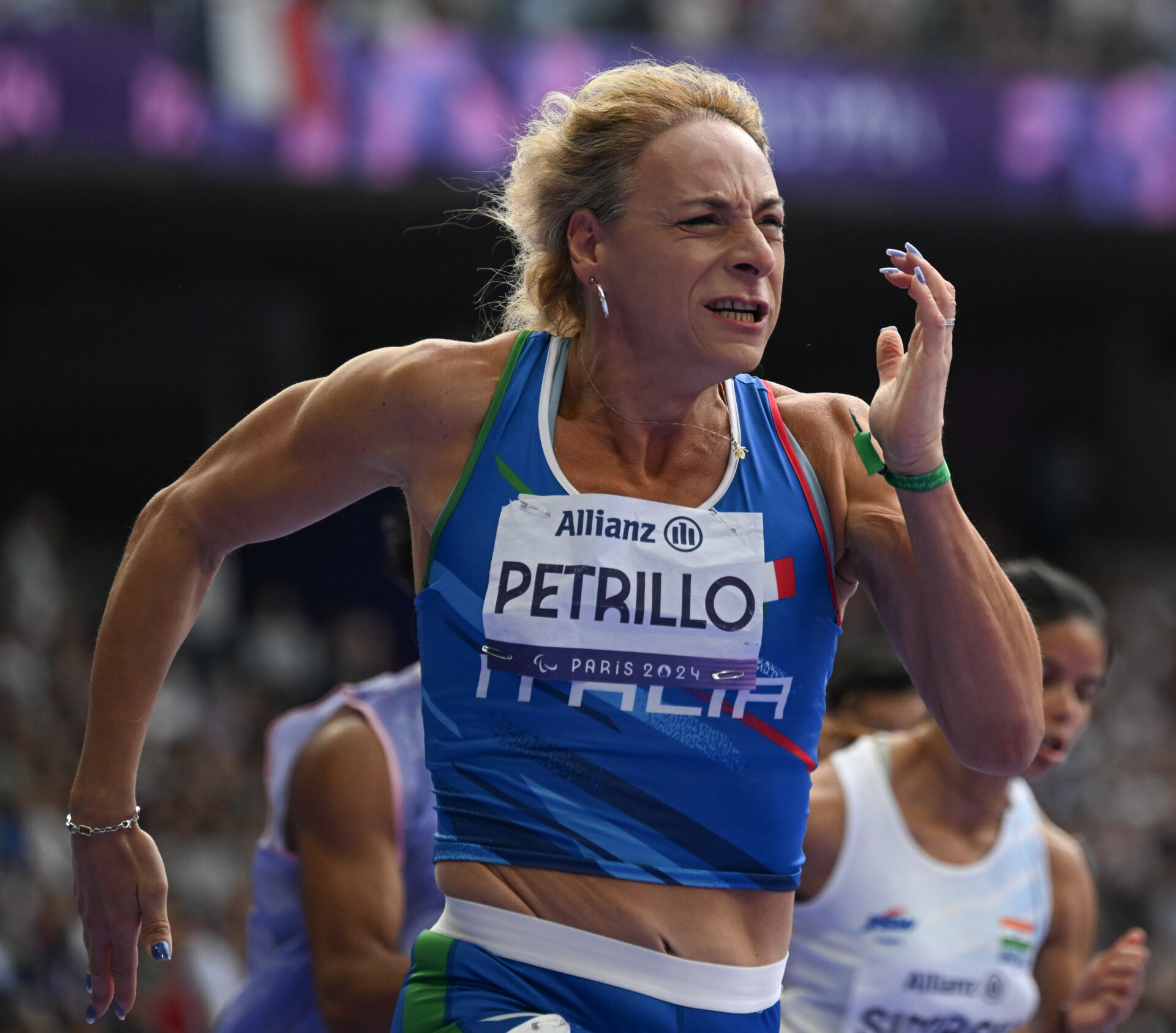
Paris, September 6, 2024 Paralympics Paris 2024 XVII Paralympic Games Athletics In photo: 0609 ATHLETICS 200m PETRILLO Valentina Photo by Eva Pavía / CIP
FD: When did you become aware of your gender identity? I imagine it might be similar to the way many people discover their sexual identity–it’s usually not one specific moment but a series of events, even small ones…
VP: Yes, the feminine aspect has been part of my life since I was young. I was five or six years old when I would play with my friend, and we would swap gender roles. Even then, I understood that my biological sex didn’t match my gender identity. A big disappointment came on the day of my first communion. I wanted to wear the girl’s dress, but I was forced to wear the boy’s outfit. It made me very sad. At first, I tried to accept this part of myself by living it privately, deciding not to tell anyone. I had a transgender cousin in the family who was thrown out of her home. I was afraid the same thing would happen to me.
FD: One of the aspects that struck me the most when watching the film 5 Nanomoli is your relationship with your father. Before your gender transition, you were married to a woman, you had a child together. How did your family accept your transition?
VP: My father was exceptional. He’s a fundamental figure in my life. My mother never knew anything because she passed away before I began my transition. At a certain point, there comes a moment when you have to face everything. For me, 2018 was the year of revelation. I came out and started living as a woman, and it was the year I was reborn as Valentina. My father prioritized the love a parent has for their children. My journey has been towards happiness, and this thought helped both my father and my brother. It’s the only case where someone who no longer exists hasn’t died, but has been reborn. My father was the first in my family to refer to me in the feminine. My brother took a bit longer to adjust.
FD: How did your body change during your transition?
VP: The first month was terrible. My male side was essentially reset: I lost strength, energy, and the desire to do anything. I also gained 10 kilos. My breasts started to grow. The shape of my body began to feminize. The hair on my body disappeared, and my skin became softer…
FD: How did it impact your sports performance?
VP: On the one hand, I saw my body changing according to my desire, but on the other hand, as an athlete, I saw my performance as a competitive athlete decline. Then, one day, while looking at myself in the mirror, I realized it’s better to be a happy, slower woman, than a sad, faster man. Hormonal treatments don’t only affect testosterone. If only they did! They affect the entire body, creating an imbalance and a disadvantage compared to a cisgender male or female athlete. The hormones I take are used to treat cancer. They are adapted medications. I became anemic. I have to have regular bone checks because I’m at risk for osteoporosis.
FD: How has your relationship with your body changed?
VP: I feel like myself now.
FD: In the past years, you’ve participated in rallies, appeared on television, ran for city council, and responded to many criticisms, including from J.K. Rowling (!). When did you realize you couldn’t just be an athlete, but also an activist?
VP: I don’t consider myself an activist; I consider myself a person who does activism. There’s a subtle difference. There was a moment when I had to reflect on the fact that my story would become public. It was clear that it would happen. I immediately decided I wanted my story to be shared because it’s important. The stories of transgender people are often linked to negative, outdated narratives. Mine is a beautiful story, and I wanted people to know it. I decided to speak about it personally because the narratives must be ours. I am a co-screenwriter of the film: I contributed to the proposed scenes. I wrote my book myself. It’s important because it’s hard for cisgender people to understand what a transgender person might feel.
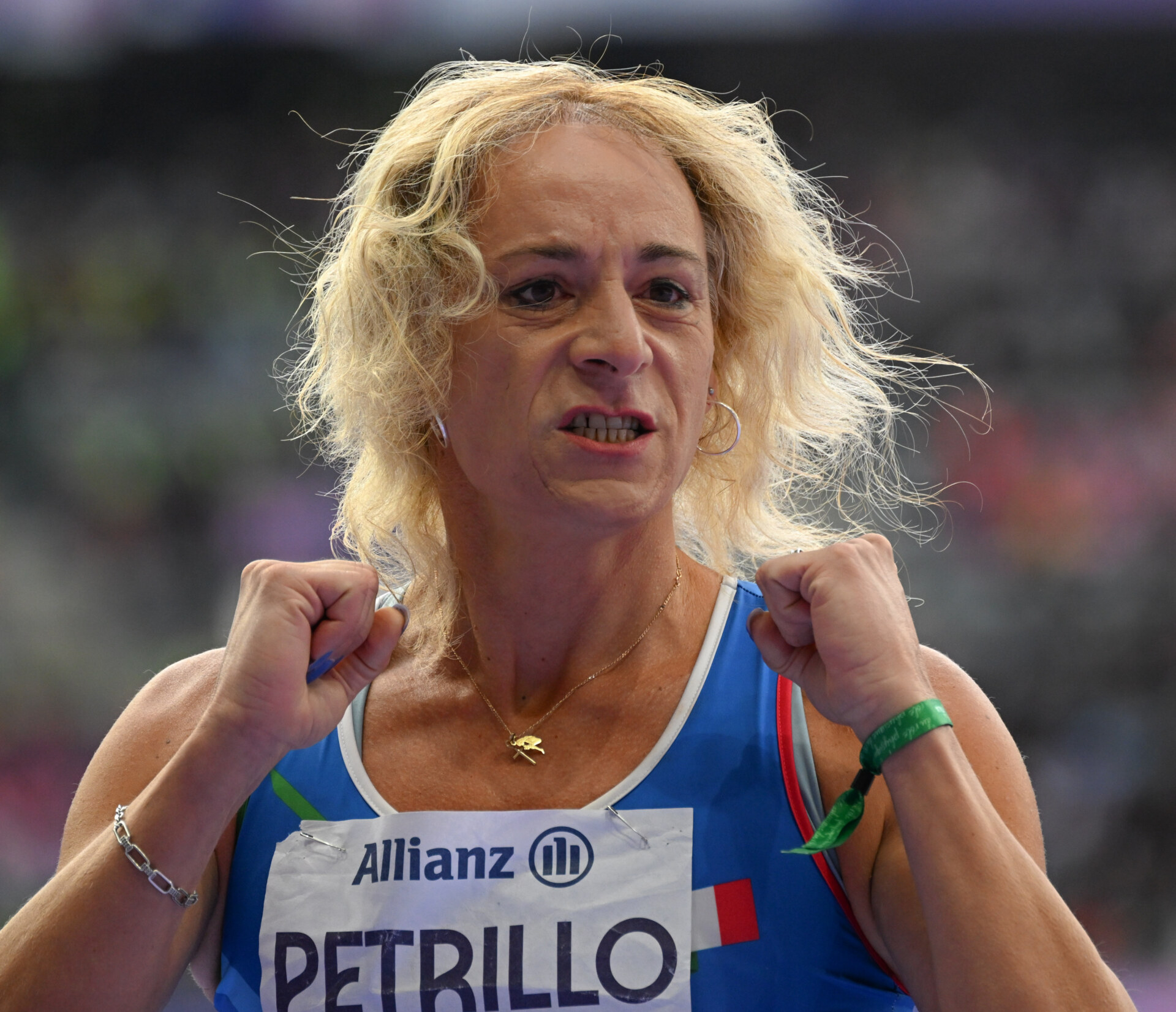
Paris, September 6, 2024 Paralympics Paris 2024 XVII Paralympic Games Athletics In photo: 0609 ATHLETICS 200m PETRILLO Valentina Photo by Eva Pavía / CIP
FD: How do you manage haters on social media?
VP: I keep my distance from them. For example, I didn’t know what happened on social media while I was in Paris. Someone had to show me J.K. Rowling’s tweet. I don’t have the arrogance to change anyone’s mind, and I no longer respond to every comment like I used to.
FD: Next stop, Los Angeles?
VP: Yes! My age isn’t in my favor, but I’ll give it a try. The next step is the World Championships in India. I’ll have to prove I’m still competitive.
FD: Are you happy?
VP: Yes. Although I find it unfair that my story–our stories, as transgender people–are often exploited. Today, I no longer need anyone’s validation.
This interview has been translated from Italian and edited for length and clarity.
